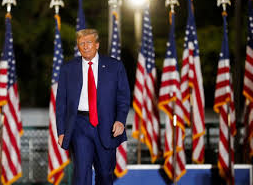How the US President’s New Trade Measures Were Calculated and Their Potential Impact
US President Donald Trump has introduced a 10% tariff on imports from most nations, with even steeper rates for those he considers major offenders. But how were these tariffs determined? BBC Verify has examined the methodology behind the figures.
The Calculation Process
When Trump unveiled a large visual chart in the White House Rose Garden detailing the tariff rates, many assumed the figures were based on pre-existing trade policies and regulatory barriers. However, a subsequent White House release revealed a mathematical formula behind the decision.
The formula is straightforward: take the US trade deficit with a specific country, divide it by the total value of goods imported from that nation, then halve the result.
For example, with China, the US has a goods trade deficit of $295bn and imports $440bn worth of products. Applying the formula, the resulting tariff is 34%. The same method led to a 20% tariff on goods from the EU.
Are These Tariffs Reciprocal?
Contrary to expectations, the tariffs are not designed to match what other countries impose on US goods. Instead, they aim to eliminate the US trade deficit with each targeted nation. However, in some cases, tariffs were imposed even when the US does not run a deficit, such as with the UK. Over 100 countries are affected by the new policy.
Economic Implications
Trump argues that these tariffs will counter what he sees as an unfair trade imbalance, protecting American jobs and boosting domestic manufacturing.
However, many economists disagree. While the measures may reduce trade deficits with specific countries, they are unlikely to lower the overall US trade deficit. This is due to broader economic factors, including the tendency of Americans to spend more than they save.
Professor Jonathan Portes of King’s College London explains: “Yes, bilateral trade deficits may shrink, but the wider economic consequences are not accounted for in the calculations.”
Additionally, trade deficits are not solely the result of tariffs. Factors such as climate conditions and cost-effective production methods abroad also influence import levels.
Thomas Sampson from the London School of Economics critiques the approach, stating: “The formula is reverse-engineered to justify tariffs on deficit nations. It lacks a solid economic foundation and will have global repercussions.”


